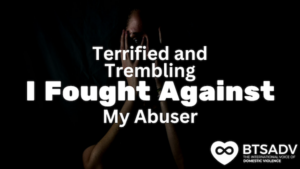First responders are skilled individuals who respond to an emergency or crisis call. Like their names imply, they are often the first to arrive on the scene. First responders have evolved to include firefighters, EMS paramedics, law enforcement, child protective workers and even school counselors. First responders are rarely aware of the details, extent, or safety of a situation when entering it, which is why they should be thoroughly trained to handle a full range of situations. The initial interaction that a domestic violence victim has with a first responder can make the difference between empowering a victim to escape an abusive relationship, or creating a sense that asking for help only makes things worse.
Victims and survivors tend to have at least some contact with first responders before and after their abuse. Unfortunately, the interaction has not always been positive. In fact, for many victims, that interaction leads them to be distrustful and afraid of the very people whose job is to protect them.
Survivors are no different. They often feel misunderstood and blamed for the actions of their abusers. This contributes to the lack of reporting abuse and asking for help, as well as an increase in returning to their abusers. So, if given the chance, what would victims and survivors of domestic violence want first responders to understand about their life-changing initial interaction?
Abuse is a cycle
According to Safe Lives: Ending Domestic Violence, it takes on average 50 incidents of abuse before the victim seeks help. To those that have never experienced domestic violence, that number can be baffling–why doesn’t the victim report it the first time it happens, let alone leave the abuser? Behind the scenes is a cycle of violence that leads the victim through a never-ending battle with both their minds, and their hearts.
Victims often love their abusers and, like other relationships, they want to make it work. They want to have a two-parent household for their children, and believe that if they love their abuser enough and change themselves, then they will be able to end the abuse. It is common for victims to make excuses for their abusers–they are overly jealous, work too hard or drink too much. Abusers tend to lack accountability and blame the victims for triggering them and making them become abusive. The victim’s negative qualities are often pointed out, and they experience shame and guilt for causing the abuse.
Within the cycle of violence is the honeymoon phase, a time that the abuser apologizes, gives gifts, promises to change, and seems sincere, leaving the victim with the hope that this time it will change.
It’s about power and control
Domestic violence is about the abuser controlling the victim. Coercive control occurs in a variety of ways, including psychological, financial,and physical abuse The victim is often isolated from family and friends, unable to keep a job due to domestic violence incidents, and is not in control of the finances, leaving them unable to leave, support their children and nowhere to go.
According to the National Network to End Domestic Violence,victims experience financial abuse in 99% of domestic violence relationships. This financial control makes it difficult to leave and often a reason why they return to their abusers.
The victim is often threatened that if they ask for help that the victim will end up in jail, that the children will be taken away, or they will become homeless. Fear of the abuser following through on their threats of hurting themselves or the victim as a form of retaliation if the abuser goes to jail, is a common reason victims don’t leave. According to the National Coalition for Homelessness, the most dangerous time for a victim is when they are leaving. The victim is 70 times more likely to be seriously or fatally injured after leaving an abusive relationship.
There are a lot of damaging myths
Domestic violence occurs behind closed doors, is under-reported, and is filled with stereotypes and myths. The media contributes to these false ideas, and first responders, like many others, believe this misinformation. According to Splinter, 33% of first responders felt that domestic violence was a result of normal stress and frustration. Slightly under half of the first responders believed that if the victim stayed, they are responsible for the continuing abuse. Other findings showed that victims are viewed as secretly wanting to be abused, causing first responders to have a negative view of domestic violence victims.
During the research study, a training course was provided; however, upon completion 32-43% of participants were still dissatisfied with domestic violence victims. The stereotypes are ingrained in many minds, making it difficult for people to respond outside of their preset beliefs. It is no surprise that victims often feel as if first responders don’t take them seriously, believe that the abuser needs to walk away and calm down, or ask the victim what they did to trigger the argument. These stereotypes focus on the behavior of the victim, not the abuser, instead of empowering the victim for seeking help, they enable the abuser and deter victims from calling again.
First responders are often the first call for help and may be the last contact that the victim will have with authorities, depending on the interaction between the victim and the responders. EMS are often not thoroughly trained in recognizing domestic violence. Emergency workers focus on injuries, and if medical care is needed. Often victims refuse to go to the hospital for fear of CPS, retaliation or police involvement, leaving injuries untreated and victims left to clean up the aftermath of asking for help. Law enforcement tends to focus on if there is a need to take someone to jail, and in domestic violence calls they look for injuries . It is common that the victim is arrested due to unseen injuries and the abuser having defense marks from the victim. Child welfare workers are for the children and may see the victim as a perpetrator for allowing the child to be around an abusive situation. This can result in the child being taken away and couples counseling and classes to being ordered, often causing more harm than good.
Calling for help frequently opens the door to several of these organizations, including the justice system. Without knowing, courts similarly re-victimizing the victim, further allowing the abuser to legally control the victim with trial resets and lengthy proceedings. When criminal charges are involved, the abuser hires a defense attorney to discredit the victim, while the victim is not entitled to be represented since they are not charged of a crime. Victims are treated as evidence and subpoenaed in front of the court, with the consequence of going to jail if they do not comply with the order. Many victims recant their accusations of abuse and refuse to cooperate with the courts due to the stress and long wait for cases to finalize. Abusers are often released without consequences and victims return to a life of abuse.
First responders have an opportunity to make a pivotal change in the prevention and intervention of domestic violence victims.Their interaction with the victim will determine the amount of trust the victim will have for authorities. Domestic violence education is essential for not only first responders but the community. Stereotypes are difficult to overcome, but with consistent and up-to-date training, immediate referrals to victim advocates and changes in policies the realities of domestic violence will be replaced with knowledge and facts.
If you or someone you know is in an abusive relationship, there is help. You can visit the Break the Silence Against Domestic Violence website at www.breakthesilencedv.org or chat with one of our helpline advocates at 855-287-1777.










